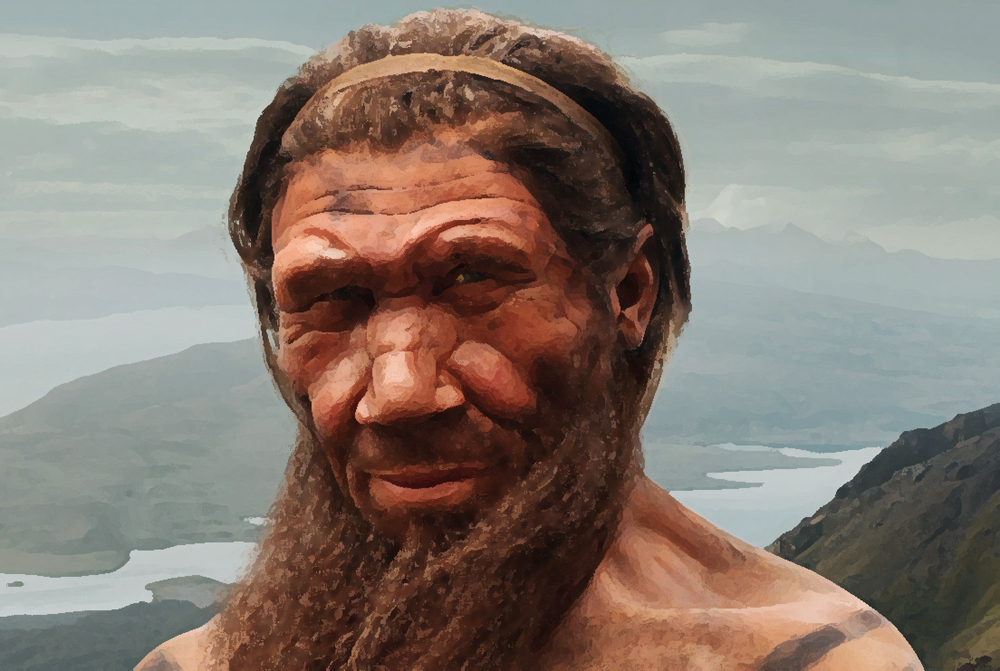


An article by Kyle Frischkorn on phys.org - The 2 million year melee - neanderthals vs. Humans - reports on Dimitra Papagianni's seminar 'The Neanderthal Paradox.'

Dimitra Papagianni, a researcher from the Centre for Archaeology of Human Origins at the University of Southampton, suggests that the common perception of the 'casual saunter' from species to species doesn't do justice to the 2-million-year epic story of how modern humans 'beat out their Neanderthal cousins to survive and thrive' in the bitterly cold lands of modern day Europe.
Papagianni gave the inaugural seminar - The Neanderthal Paradox - for the newly minted Center for Climate and Life at Columbia University and the Lamont-Doherty Earth Observatory, incorporating culture, climate change, genetics and evolution. Overall, it was an apt introduction to usher in this new division of Climate and Life.
The 2 million year melee—neanderthals vs. humanshttps://t.co/OfClHvctIY? pic.twitter.com/sZNrdstcWk
— Bradshaw Foundation (@BradshawFND) May 10, 2016
Though they were closely related, Neanderthals and ancient humans were different species. Papagianni compared the skull of a Neanderthal to that of a human. The difference is clear. "Think of the skull of a human as a soccer ball, and the skull of a Neanderthal as a football," she says. This sports analogy goes a step further. Like a soccer player, humans are lean and well-suited to running. Neanderthals have stocky statures and barrel chests, more like the stereotypical football player. Because of this, Neanderthals were better adapted to colder weather than ancient humans who originated in the tropical climates of Africa.
Archaeological research suggests that Neanderthals were advanced enough to make clothes and build fires, which would have been critical to survive the cold weather. They also used stone tools. Additionally, based on the size of their skulls, the brains housed with them were likely large enough to warrant some form of language capability. This language hypothesis is supported by modern experiments that show learning how to make and wield stone tools required some form of verbal instruction.
Given their adaptation to cold climes and their advanced, albeit under-appreciated, skills, how were Neanderthals beaten out by their human counterparts? The answer lies in a combination of culture and genetics that enabled the successful radiation of humans.
Humans had diets higher in energy-rich meat that could support smaller stomachs and bigger brains. They invented tools with multiple uses that could adapt to different circumstances. They had more advanced language capabilities to pass on these skills.
So the humans migrated north into Europe. This is where the genetic factors come into play. Neanderthal communities became fractured. As they grew more and more isolated, their gene pool evaporated into a spattering of puddles. This so called genetic bottleneck can lead to the demise of a species when genetic diversity gets prohibitively low.
Papagianni explained the current theories for how humans were able to persist in the North at the expense of Neanderthals, but she ended on an ongoing research question: Why did humans leave Africa in the first place? Their migration could have been sparked by competition, climate change or simply a great hallmark of 'human' nature, curiosity.
Read more about the Homo sapiens and Neanderthal interaction in the ORIGINS section:
http://www.bradshawfoundation.com/origins/index.php
Follow the journeys and learn why humans left Africa in the first place on the Journey of Mankind interactive map:
http://www.bradshawfoundation.com/stephenoppenheimer/index.php
Comment
by Bradshaw Foundation
Tuesday 21 March 2023
by Bradshaw Foundation
Tuesday 07 February 2023
by Bradshaw Foundation
Thursday 19 May 2022
by Bradshaw Foundation
Tuesday 19 October 2021
by Bradshaw Foundation
Friday 25 June 2021
by Bradshaw Foundation
Monday 09 November 2020
by Bradshaw Foundation
Tuesday 03 November 2020
by Bradshaw Foundation
Wednesday 28 October 2020
by Bradshaw Foundation
Tuesday 23 June 2020
by Bradshaw Foundation
Thursday 04 June 2020
by Bradshaw Foundation
Thursday 14 May 2020
by Bradshaw Foundation
Tuesday 12 May 2020
by Bradshaw Foundation
Wednesday 19 February 2020
by Bradshaw Foundation
Tuesday 21 January 2020
by Bradshaw Foundation
Monday 20 January 2020
by Bradshaw Foundation
Thursday 28 November 2019
by Bradshaw Foundation
Tuesday 21 March 2023
by Bradshaw Foundation
Tuesday 07 February 2023
by Bradshaw Foundation
Thursday 19 May 2022
by Bradshaw Foundation
Tuesday 19 October 2021
by Bradshaw Foundation
Friday 25 June 2021
by Bradshaw Foundation
Monday 09 November 2020
by Bradshaw Foundation
Tuesday 03 November 2020
by Bradshaw Foundation
Wednesday 28 October 2020
by Bradshaw Foundation
Tuesday 23 June 2020
by Bradshaw Foundation
Thursday 04 June 2020
by Bradshaw Foundation
Thursday 14 May 2020
by Bradshaw Foundation
Tuesday 12 May 2020
by Bradshaw Foundation
Wednesday 19 February 2020
by Bradshaw Foundation
Tuesday 21 January 2020
by Bradshaw Foundation
Monday 20 January 2020
by Bradshaw Foundation
Thursday 28 November 2019
Friend of the Foundation











